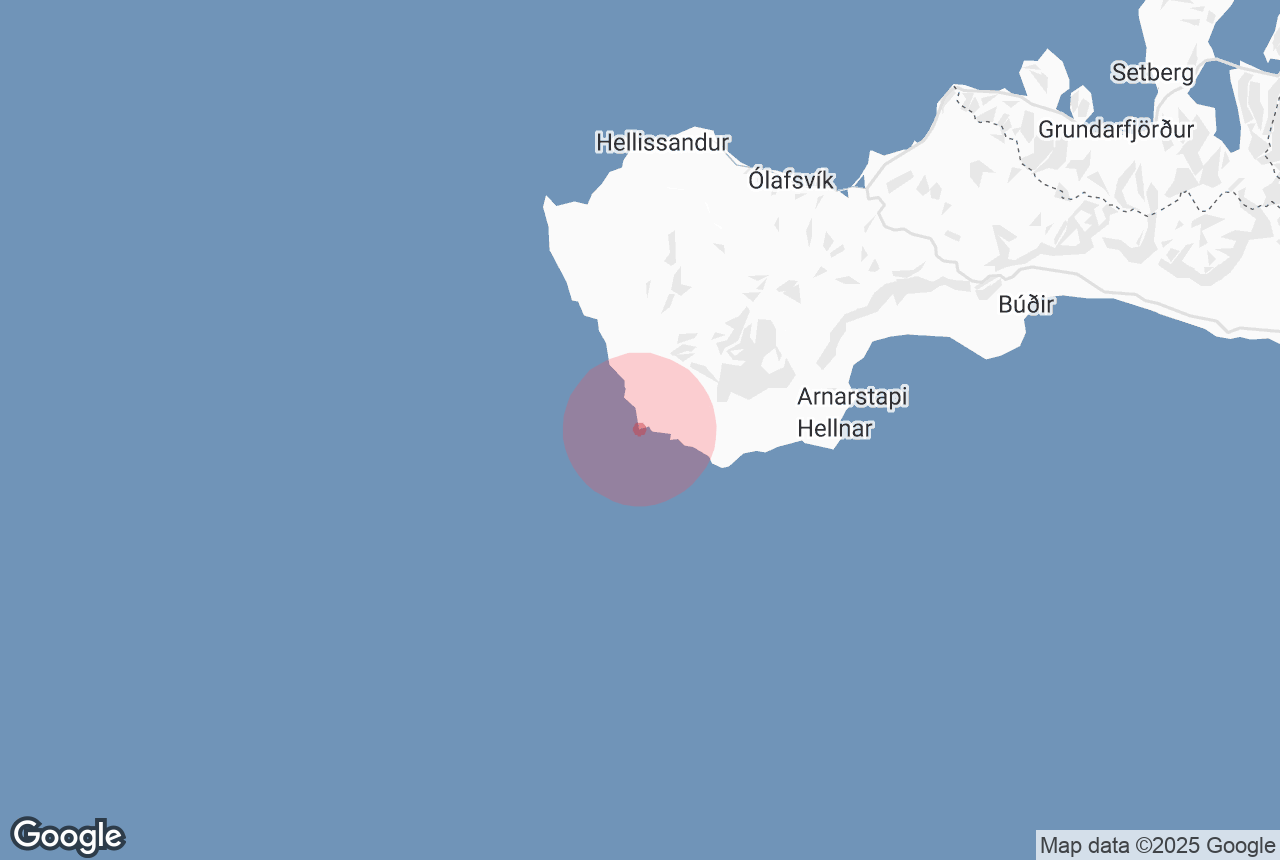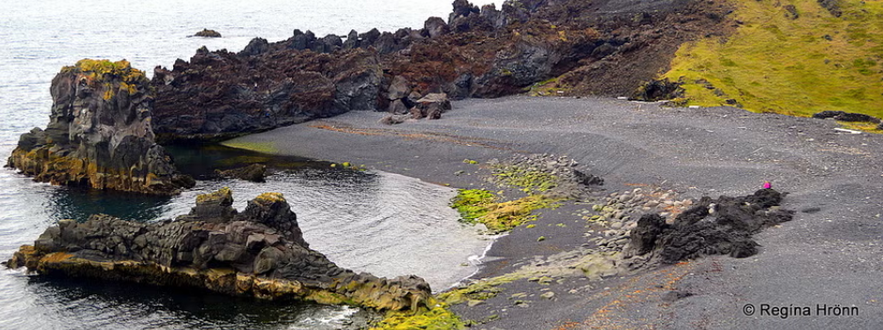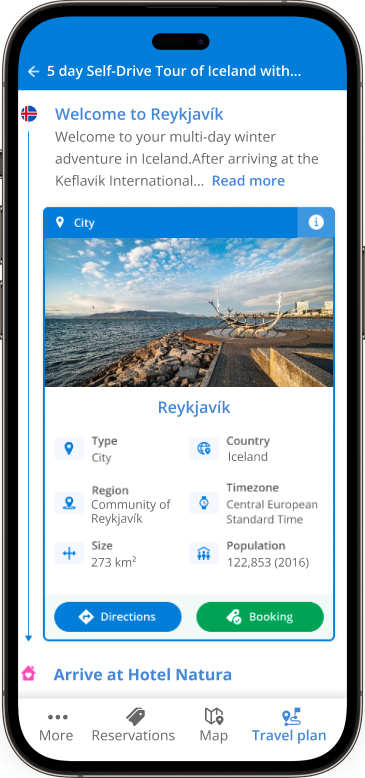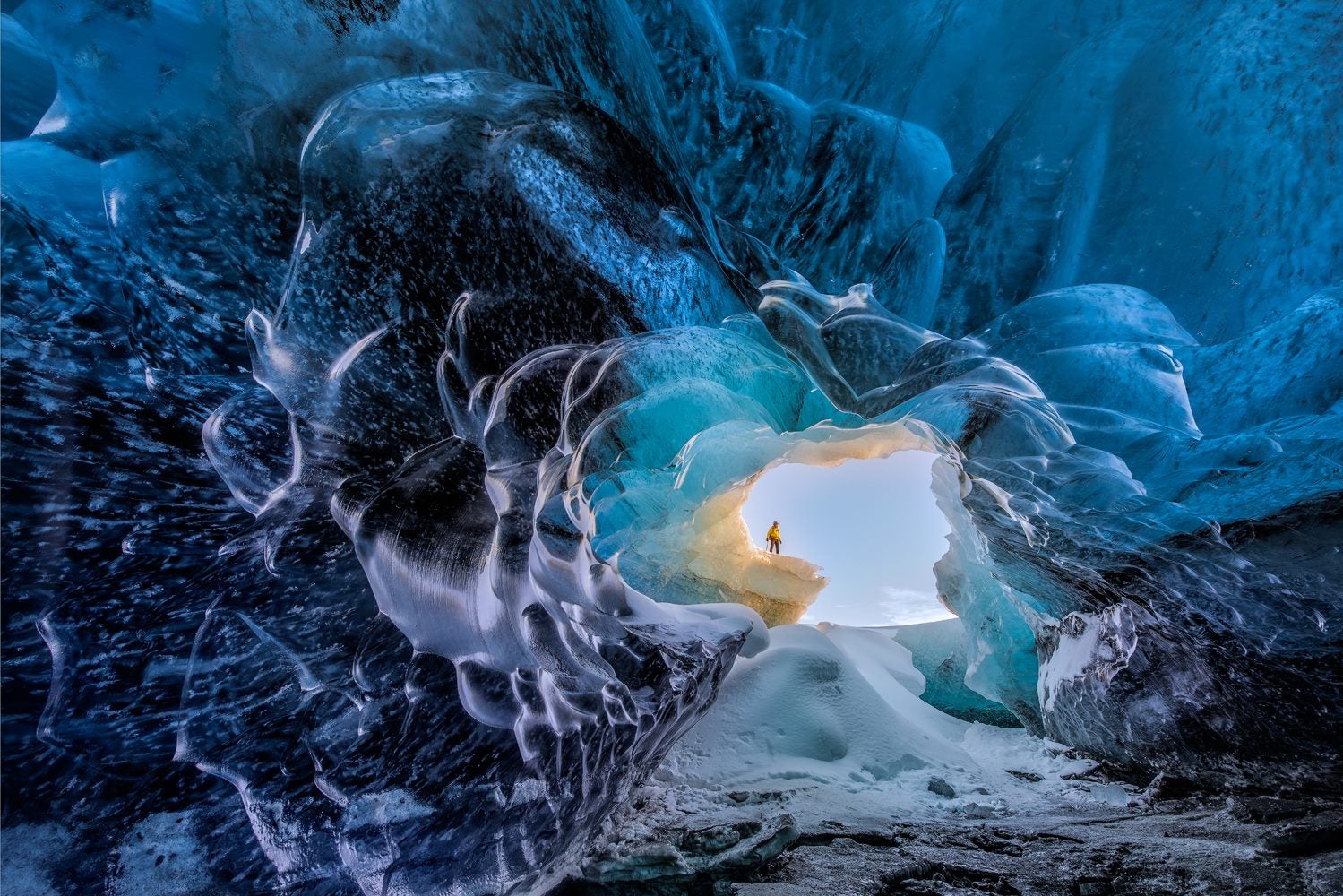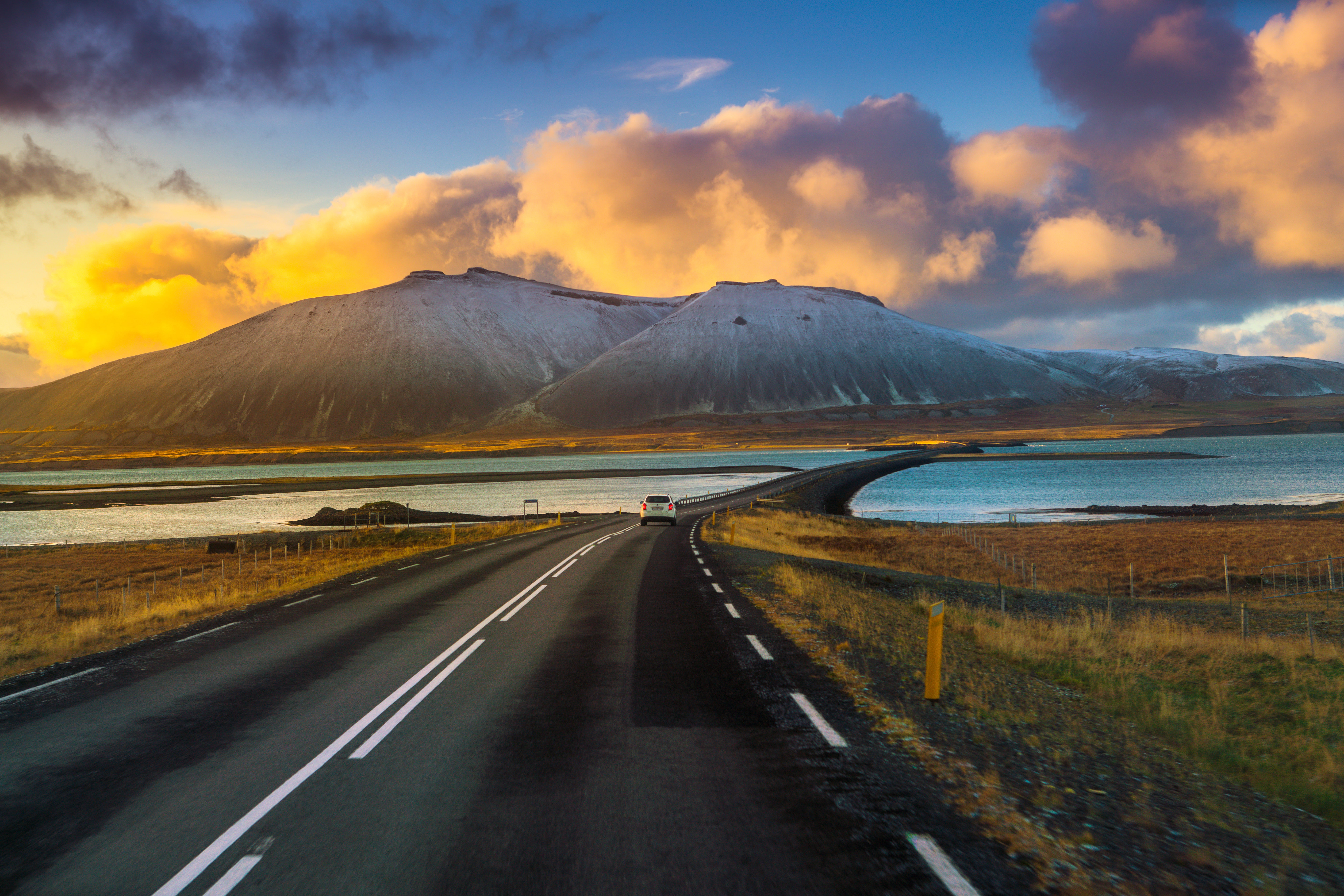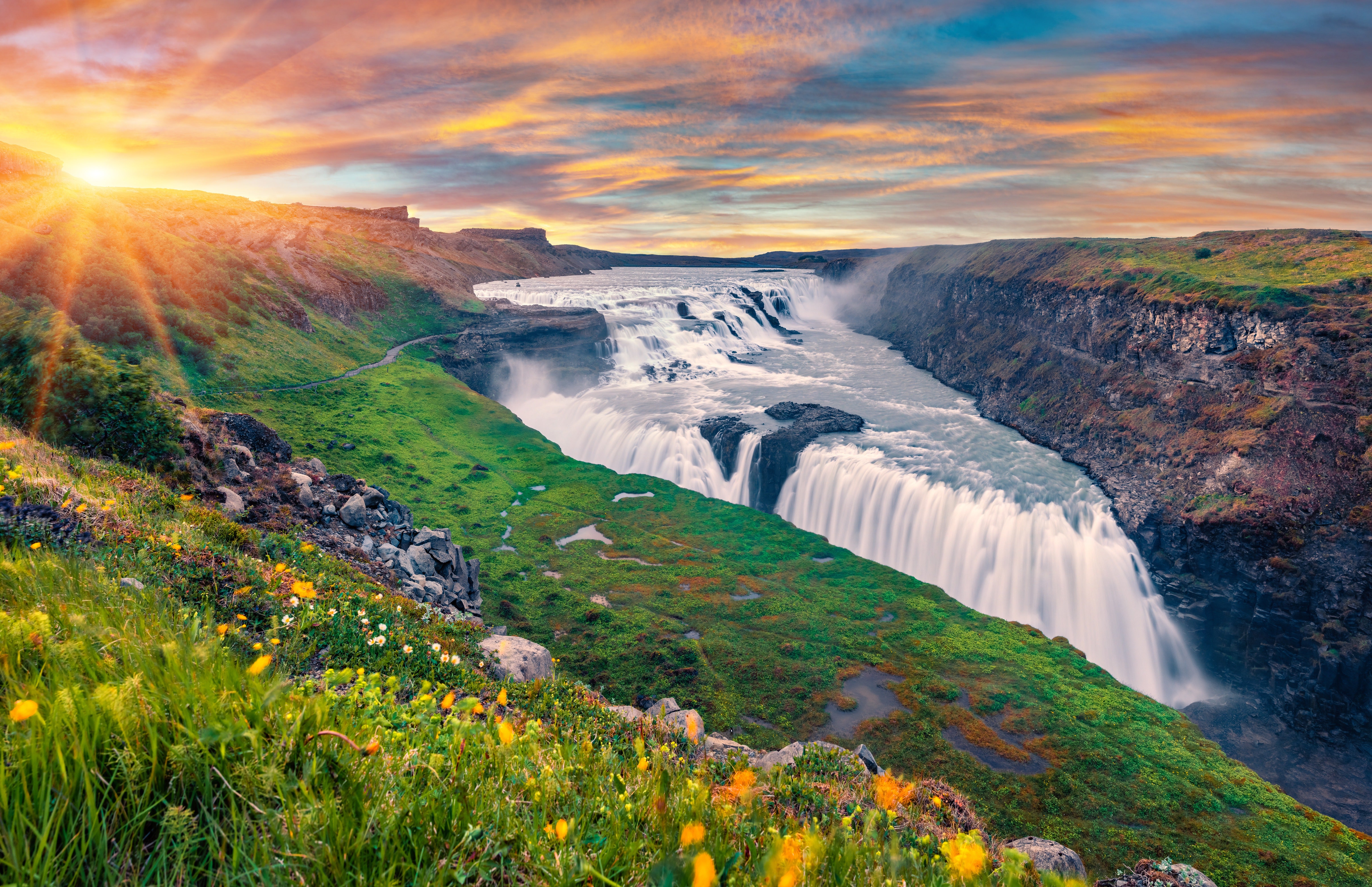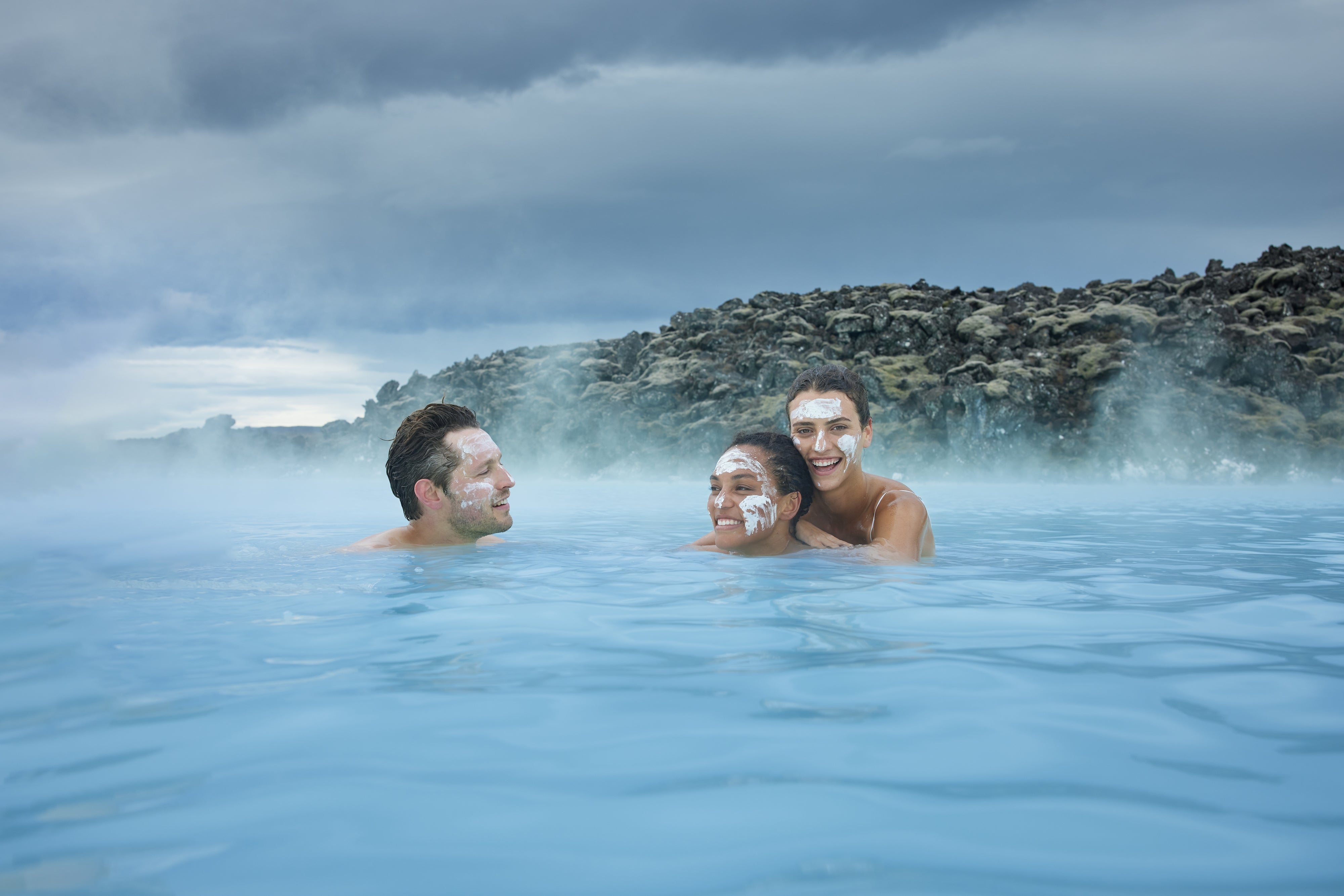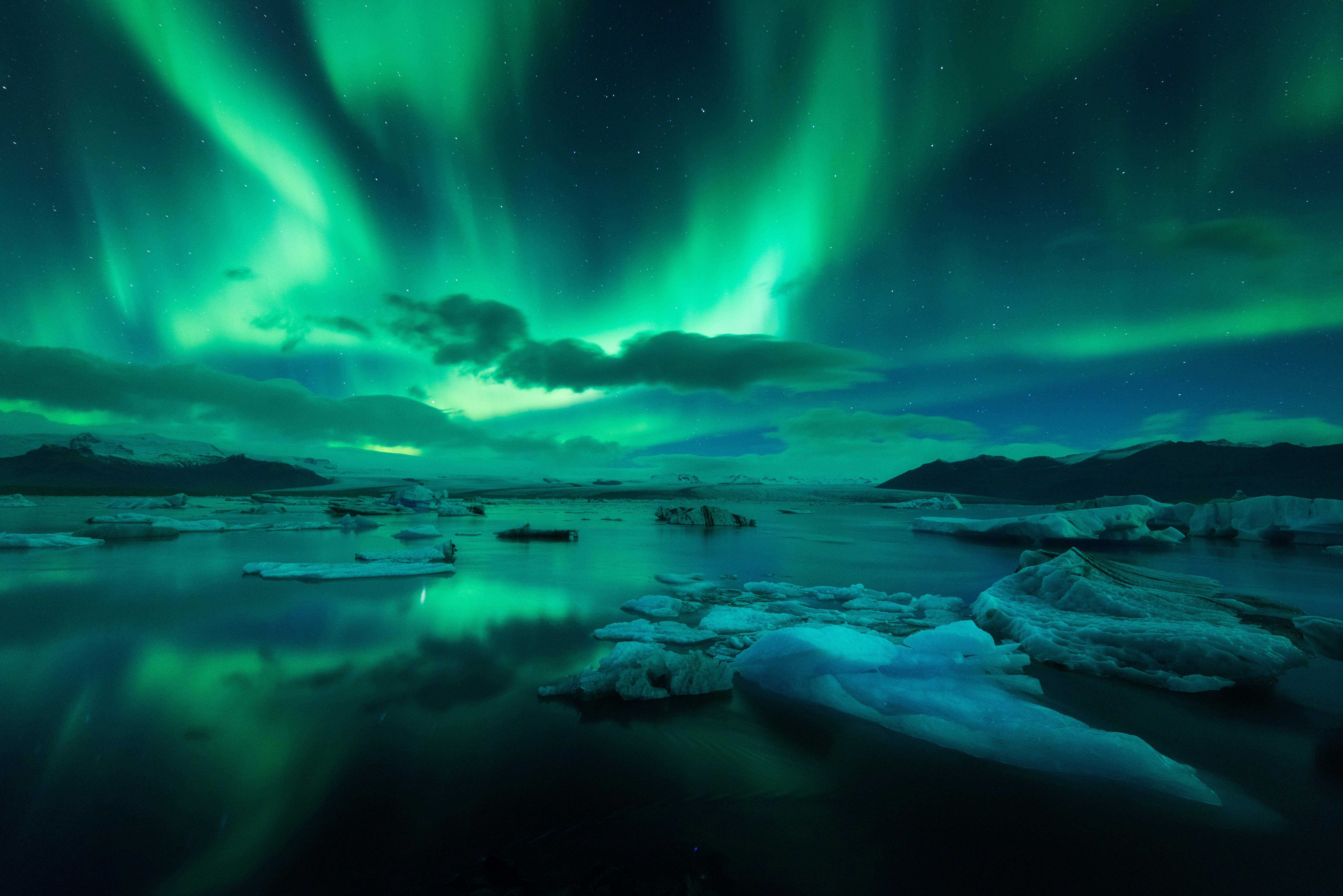Dritvik Cove is a small, sheltered bay that was once an important fishing station. Back in the 1600s to 1800s, hundreds of fishermen worked here. At its peak, about 60 fishing boats and up to 400 people stayed in the area during fishing season.
Black pebble beaches, lava rock formations, and steep cliffs surround the cove. Some of the most interesting rock shapes in the area are called Bardarskip (Bardar's Ship) and Trollakirkja (The Troll's Church). These lava rocks were created by volcanoes a long time ago.
Why You Can Trust Our Content
Guide to Iceland is the most trusted travel platform in Iceland, helping millions of visitors each year. All our content is written and reviewed by local experts who are deeply familiar with Iceland. You can count on us for accurate, up-to-date, and trustworthy travel advice.
Nearby is a place called Djupalonssandur Beach, which also has black stones and the famous "lifting stones" that fishermen used to test their strength.
How To Get To Dritvik Cove
 From Reykjavik, drive north on Route 1 to Borgarnes. Then, take Route 54 toward the Snaefellsnes Peninsula. When you reach Route 574, follow it to the Djupalonssandur parking area. There’s a trail through a lava field that leads to the beach and then to Dritvik Cove.
From Reykjavik, drive north on Route 1 to Borgarnes. Then, take Route 54 toward the Snaefellsnes Peninsula. When you reach Route 574, follow it to the Djupalonssandur parking area. There’s a trail through a lava field that leads to the beach and then to Dritvik Cove.
It’s an easy hike, about 0.6 mile (1 kilometer) from the beach to the cove.
Dritvik is not always included in standard Iceland tours, but you can visit it on your own or choose a tour that covers the Snaefellsnes Peninsula.
Dritvik Cove is on the southern coast of the Snaefellsnes Peninsula. It’s about 124 miles (200 kilometers) northwest of Reykjavik, which takes about 2 hours and 45 minutes by car to get to. You can get there by driving on Route 1 (the Ring Road), then turning onto Route 54 and, later, Route 574.
There’s a parking lot near Djupalonssandur Beach, and from there, you can hike to the cove.
Dritvik Cove Special Facts

Near Dritvik Cove, you can also see shipwreck pieces from a British trawler that crashed in 1948. The broken metal is still on the beach, reminding visitors of the dangers of life at sea. Fourteen men lost their lives in this incident, and the scattered iron pieces serve as a memorial to them.
Guided Tours
If you want to the famous mystical peninsula of Iceland, go on the Best Snaefellsnes Peninsula Tours. These tours offer comfortable travel and unforgettable experiences of the place they call “Iceland in Miniature.”
8-Day Guided Tour - Go on an 8-day guided tour around Iceland's Ring Road during winter. See amazing sights like glaciers, waterfalls, and geysers. Enjoy fun activities and the chance to see the northern lights. Includes Dritvik Cove in one of the destinations.
Snaefellsnes Peninsula Tour from Reykjavik - Experience the magic of Iceland on the Mysterious Snaefellsnes National Park day tour. Travel in a small group from Reykjavik to see amazing sights like lava fields, waterfalls, and the ice-covered Snaefellsjokull volcano.
Self-Drive Tours
Explore at your own pace with self-drive tours in Iceland. These tours include a rental car, accommodations, and detailed itineraries, allowing you to visit stunning places like waterfalls, glaciers, and geysers on your own personal schedule.
Enjoy the freedom to discover Iceland's natural beauty while having support available if needed.
10-Day Self-Drive Tour – Take an amazing 10-day road trip around Iceland and the Snaefellsnes Peninsula. See cool places like waterfalls, volcanoes, and black sand beaches. Drive at your own speed and stay in comfy hotels each night. Includes Dritvik Cove in one of the destinations.
7-Day Northern Lights Self-Drive Tour - Go on a 7-day road trip in Iceland to see the northern lights. Visit amazing places like waterfalls, glaciers, and geysers. Everything is planned for you, so you can relax and enjoy the trip. Includes Dritvik Cove in one of the destinations.
Unforgettable 1-Week Self-Drive Tour - Take a 7-day road trip along Iceland's South and West Coasts and the Golden Circle. See cool places like waterfalls, glaciers, and geysers. Drive at your own speed and stay in nice places each night. Includes Dritvik Cove in one of the destinations.
Top Things to See at Dritvik Cove

One of the coolest things to see is the black pebble beach. The beach is made of small, smooth stones that came from volcanoes. The waves crash against the shore, and the sound of the rocks rolling in the surf is something you won’t forget.
There are also amazing lava rock shapes all around the cove. Some of the rocks have names, like Bardarskip (Bardar’s Ship) and Trollakirkja (The Troll’s Church). These strange shapes make the area feel magical, like a place from a storybook.
Nearby, you can also visit the remains of a shipwreck from 1948. Pieces of the British trawler are still lying on the beach, reminding visitors of the dangers of the sea. With so much natural beauty and history in one place, Dritvik Cove is a must-see on your Iceland trip.
Best Time to Visit Dritvik Cove
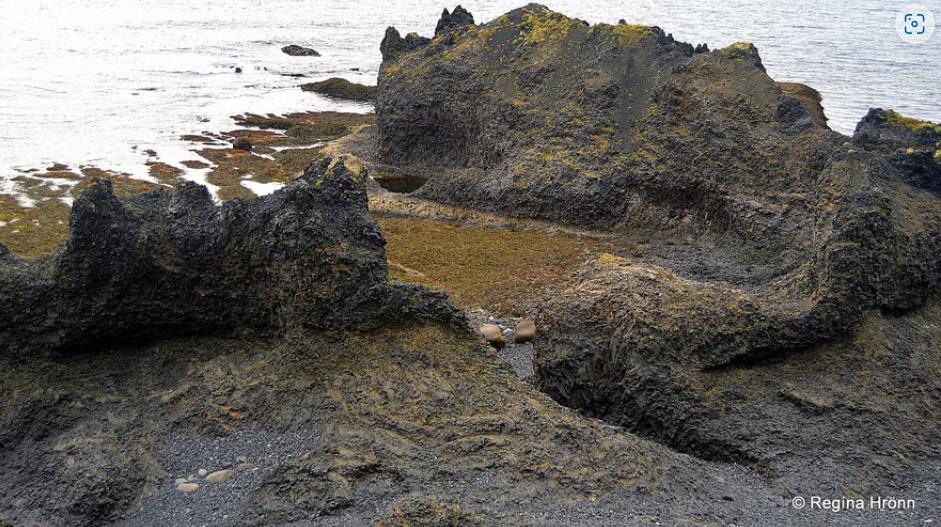
In summer, the sun barely sets, so you get more daylight to enjoy the black pebble beach and the wild lava rocks. It's also a great time to take photos, spot birds, and enjoy the peaceful nature around you.
Spring and early fall can also be a good time to visit if you want fewer crowds. The weather is cooler, but the views are still amazing, and the landscape often looks even more dramatic.
Winter visits are possible, but be careful. Snow and ice can make the roads tricky, and some paths may be closed. If you're up for an adventure, though, the area looks magical under a blanket of snow.
Other Attractions Near Dritvik Cove
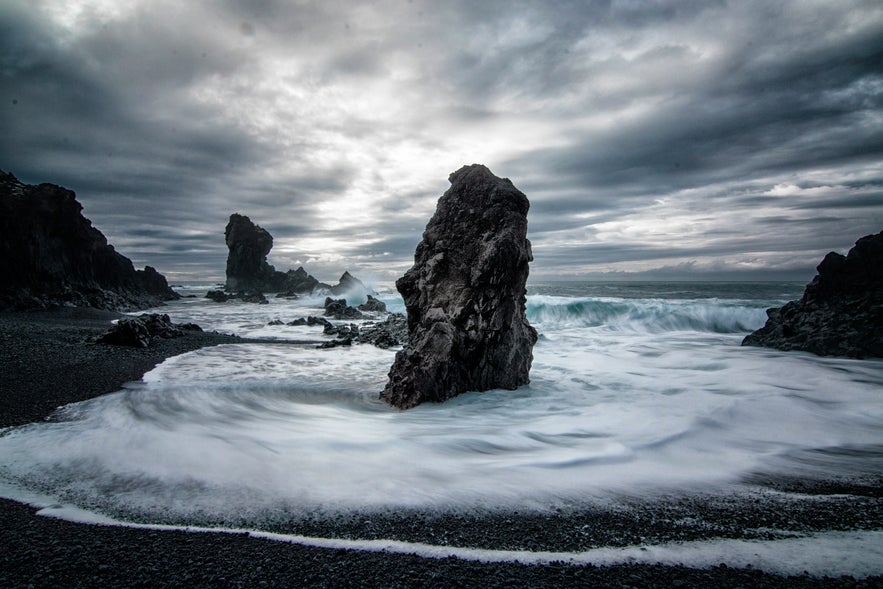 There are lots of great places to visit nearby. You can go to Djupalonssandur Beach, a black pebble beach with lava formations, shipwreck remains, and lifting stones, Snaefellsjokull National Park, a protected area with trails, volcanoes, and the Snaefellsjokull Glacier, Vatnshellir Cave a lava cave you can explore with a guide, or Arnarstapi and Hellnar, small fishing villages with beautiful cliffs and walking paths.
There are lots of great places to visit nearby. You can go to Djupalonssandur Beach, a black pebble beach with lava formations, shipwreck remains, and lifting stones, Snaefellsjokull National Park, a protected area with trails, volcanoes, and the Snaefellsjokull Glacier, Vatnshellir Cave a lava cave you can explore with a guide, or Arnarstapi and Hellnar, small fishing villages with beautiful cliffs and walking paths.
Things to Do at Dritvik Cove
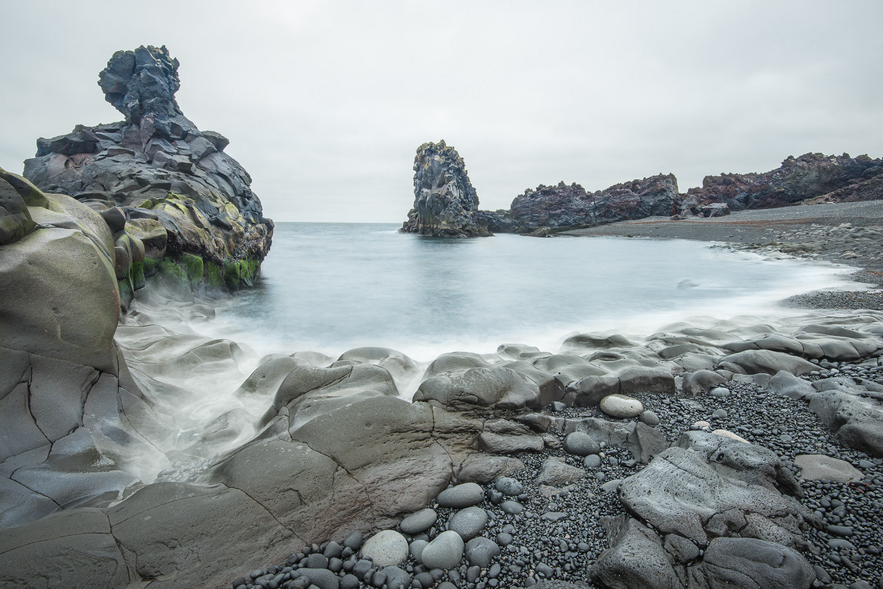
Dritvik Cove is a great place to explore if you love nature, history, and quiet places. You can walk along the black pebble beach, listen to the waves, and enjoy the peaceful views of the ocean and the cliffs.
One of the best things to do is hike the short trail from Djupalonssandur Beach to the cove. Along the way, you’ll see strange lava rocks, old ruins, and the famous lifting stones that fishermen used to test their strength.
Take some time to check out the shipwreck remains from 1948. The broken pieces of the old British trawler are still scattered across the beach and tell the story of a stormy night at sea.
Don’t forget to bring your camera! The area around Dritvik Cove is full of cool photo spots, from mossy lava fields to sea stacks and cliffs. It’s the perfect stop for anyone exploring the Snaefellsnes Peninsula.
Where to Stay Near Dritvik Cove
 When visiting Dritvik Cove on the Snaefellsnes Peninsula, you'll find several charming places to stay nearby. The small fishing village of Arnarstapi is a popular choice, offering cozy hotels like the Arnarstapi Hotel. Another excellent option is the village of Hellnar, with the top hotel being Fosshotel Hellnar.
When visiting Dritvik Cove on the Snaefellsnes Peninsula, you'll find several charming places to stay nearby. The small fishing village of Arnarstapi is a popular choice, offering cozy hotels like the Arnarstapi Hotel. Another excellent option is the village of Hellnar, with the top hotel being Fosshotel Hellnar.
For those seeking more amenities, the town of Stykkisholmur offers a range of hotels and guesthouses. Though it's a bit farther from Dritvik Cove, Stykkisholmur serves as a convenient base for exploring the northern part of the Snaefellsnes Peninsula.
We highly recommend the Fosshotel Stykkisholmur or the Stykkisholmur Inn. These two accommodations are top-rated in the town.
If you prefer a more secluded stay, consider booking a cottage or guesthouse in the countryside surrounding Dritvik Cove. These accommodations provide a unique opportunity to experience Iceland's natural beauty up close, with the added benefit of tranquility and privacy.
Safety Tips for Visiting Dritvik Cove
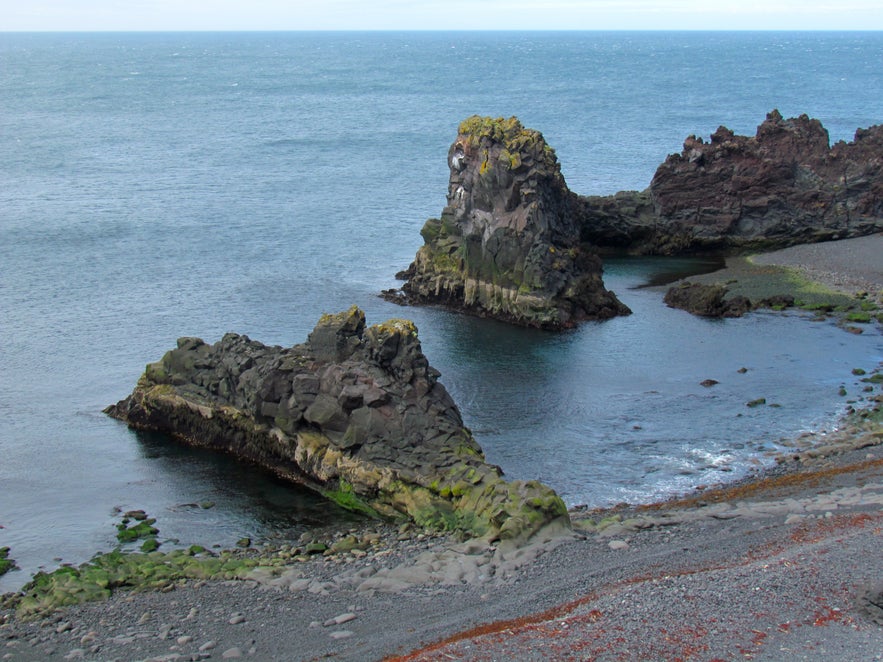 Dritvik Cove is a peaceful place, but nature here can be strong and wild. Stay away from the edge of cliffs and be careful near the water, as the waves can be powerful and surprise you.
Dritvik Cove is a peaceful place, but nature here can be strong and wild. Stay away from the edge of cliffs and be careful near the water, as the waves can be powerful and surprise you.
Wear strong shoes with a good grip, especially if you are walking on lava rocks or hiking the trail from Djupalonssandur Beach. The rocks can be sharp, slippery, or uneven, so watch your step.
Weather in Iceland changes fast, even in summer. Always check the forecast before your trip, dress in layers, and bring a waterproof jacket just in case it rains or gets windy.
There are no shops, gas stations, or restrooms at the cove, so come prepared. Bring water, snacks, and a fully charged phone—just in case you need help or get lost on the trail.
Dritvik Cove In Popular Culture
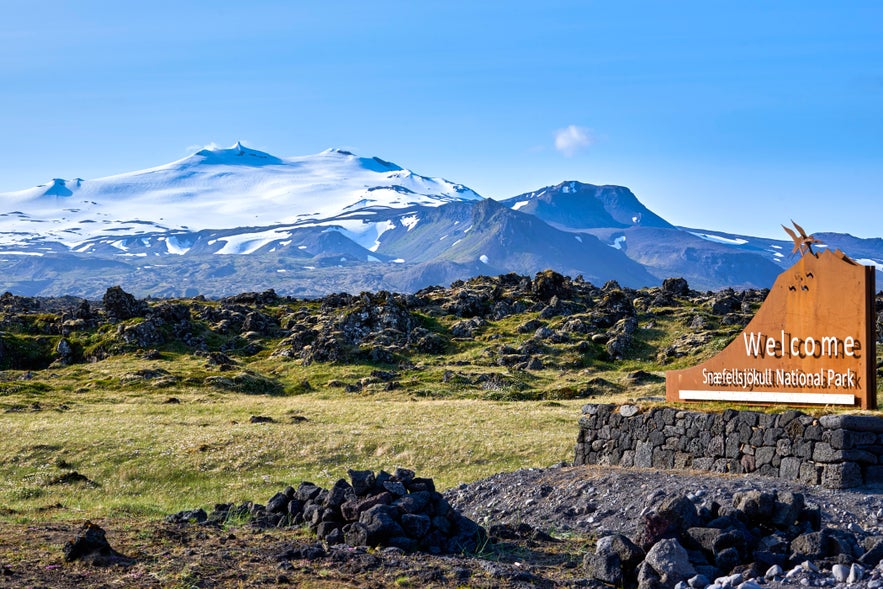 Dritvik Cove has a mysterious and magical vibe that has inspired stories and legends in Icelandic culture. The dramatic landscape of black beaches and towering lava rocks makes it a perfect setting for adventure tales and folklore.
Dritvik Cove has a mysterious and magical vibe that has inspired stories and legends in Icelandic culture. The dramatic landscape of black beaches and towering lava rocks makes it a perfect setting for adventure tales and folklore.
The cove is often linked to the famous Snaefellsjokull Glacier, which was featured in Jules Verne’s classic novel Journey to the Center of the Earth. The glacier is believed to be a gateway to a hidden world, and Dritvik Cove adds to the sense of wonder surrounding the area.
In recent years, the rugged beauty of Dritvik Cove has also attracted filmmakers and photographers. Its unique scenery and historic charm make it a favorite spot for nature documentaries and travel shows about Iceland.
Though not as well-known as some of Iceland's other attractions, Dritvik Cove continues to capture the imagination of those who visit. Its mix of natural beauty and cultural history makes it a hidden gem in popular culture.
Practical Travel Tips for Visiting Dritvik Cove
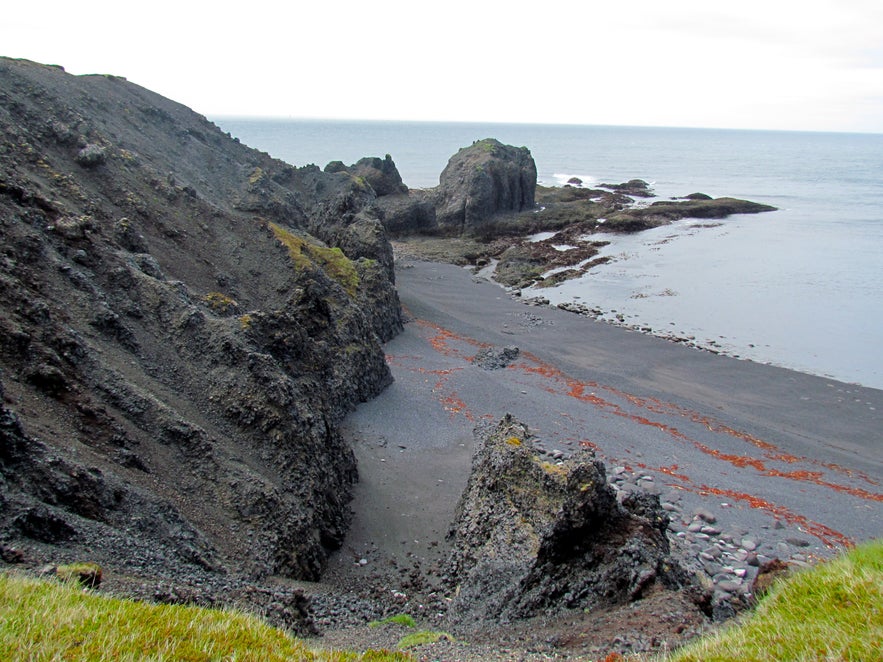 Visiting Dritvik Cove is an unforgettable experience, but it’s important to be prepared. Here are some practical tips to help you when visiting:
Visiting Dritvik Cove is an unforgettable experience, but it’s important to be prepared. Here are some practical tips to help you when visiting:
1. Check the Weather
Iceland’s weather can be unpredictable, so always check the forecast before heading out. Be prepared for rain, wind, and sudden temperature drops, even in summer.
2. Wear Proper Footwear
The terrain around Dritvik Cove can be rocky and uneven, so it’s essential to wear strong, sturdy shoes. Hiking boots or shoes with good grip will keep you safe while exploring the beach and lava rocks.
3. Bring Snacks and Water
There are no shops or restaurants near Dritvik Cove, so make sure to bring your own food and water. Having snacks will make your visit more comfortable, especially if you're hiking or spending time exploring.
4. Stay Safe Near the Water
The waves at Dritvik Cove can be powerful and dangerous. Stay away from the edge of the water and be cautious when walking on wet rocks.
5. Charge Your Phone
Since there are no services nearby, it’s a good idea to have a fully charged phone in case of emergencies. Having a charged phone will help you navigate and stay in contact if needed.
Dritvik Cove: The Ultimate Hidden Gem
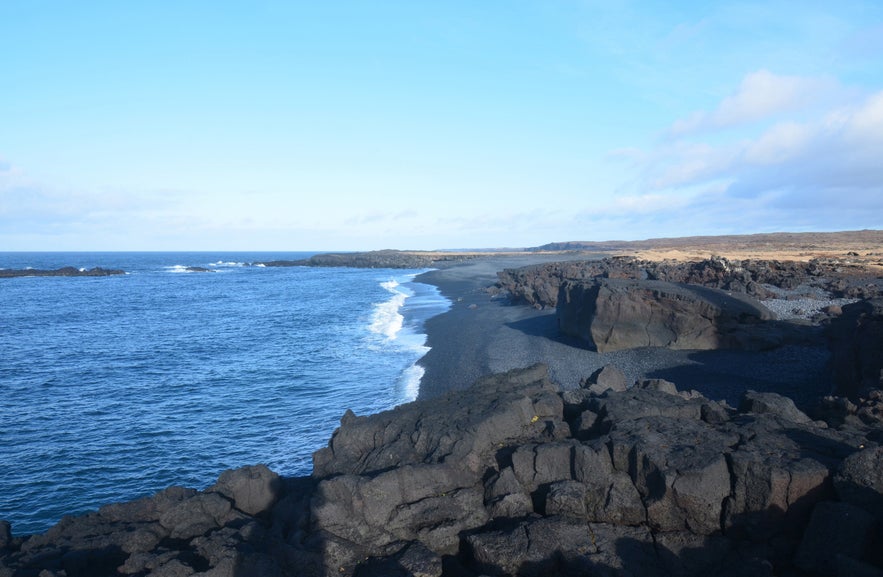 Dritvik Cove is a hidden gem on Iceland’s Snaefellsnes Peninsula, offering a unique mix of natural beauty and history. With its black pebble beaches, dramatic lava rocks, and fascinating ruins, it’s a must-see for anyone traveling through this stunning part of Iceland.
Dritvik Cove is a hidden gem on Iceland’s Snaefellsnes Peninsula, offering a unique mix of natural beauty and history. With its black pebble beaches, dramatic lava rocks, and fascinating ruins, it’s a must-see for anyone traveling through this stunning part of Iceland.
The cove's quiet atmosphere and breathtaking landscapes make it a perfect escape from the crowds. It’s a place where you can walk in the footsteps of Icelandic fishermen and explore the beauty of untouched nature. Every corner of the cove tells a story, from the old fishing huts to the pieces of shipwrecks scattered along the beach.
If you're planning a trip to Iceland, don’t miss the chance to visit Dritvik Cove. With easy access from nearby villages and plenty of scenic spots to explore, it’s an unforgettable destination. If you want more information, read our Djupalonssandur & Dritvik guide.
FAQs About Dritvik Cove
Dritvik Cove is a stunning and historic place, but you may have some questions before you visit. Here are answers to some of the most common questions to help make your trip easier and more enjoyable.
1. Is Dritvik Cove safe for kids and families?
Yes. Dritvik Cove is a great spot for families, but children should always be supervised. The rocky terrain and strong waves near the beach can be dangerous if you get too close to the water.
2. What should I wear when visiting Dritvik Cove?
It’s best to wear sturdy shoes because the path can be rocky and uneven. Dress in layers and bring a waterproof jacket, since the weather can change quickly, even in summer.
3. Is there an entrance fee?
No. There is no entrance fee to visit Dritvik Cove. It’s free to explore the area, though it’s recommended to bring your own food and water as there are no shops nearby.
4. How long should I spend at Dritvik Cove?
You can easily visit Dritvik Cove in a few hours, especially if you take time to hike the trail and explore the beach. A visit of 2-3 hours should be enough to enjoy the area.
5. Are there any guided tours to Dritvik Cove?
Guided tours to Dritvik Cove are not very common, but you can visit the area as part of a self-drive tour around the Snaefellsnes Peninsula. Some day tours to the peninsula may include a stop at the nearby Djupalonssandur Beach, which is close to Dritvik.
